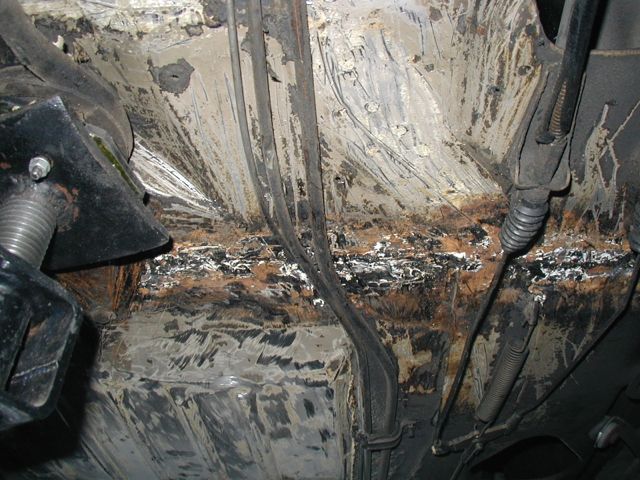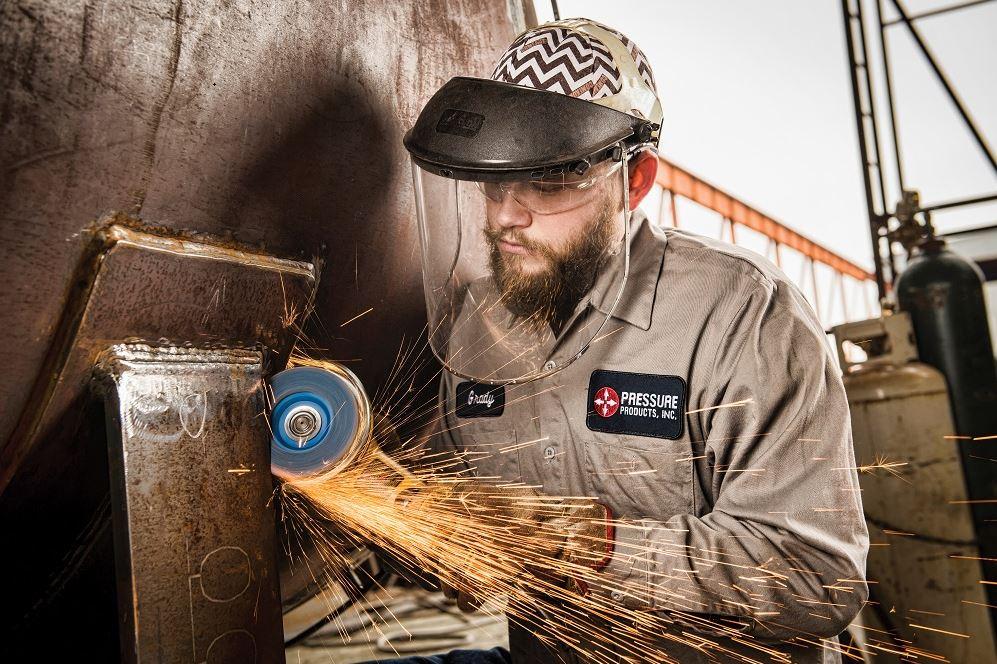Common Welding Repair Issues and Just How to Address Them Effectively
Welding repair work frequently encounter a variety of issues that can jeopardize the stability of the end product. Common troubles consist of poor infiltration, porosity, and misalignment, amongst others. Each problem presents one-of-a-kind obstacles that need particular approaches for resolution. Understanding these issues is crucial for welders aiming to improve their end results and abilities. This discussion will certainly check out these common welding repair concerns and reliable techniques to resolve them.
Insufficient Infiltration
Inadequate infiltration occurs when the weld metal fails to fully fuse with the base material, causing weak joints and potential architectural failings. This problem often stems from insufficient warmth input, inaccurate electrode angle, or improper welding speed. Welders might run into insufficient infiltration due to a mistake of the required parameters for a certain material thickness or kind. Furthermore, contamination on the base product's surface can prevent reliable bonding, intensifying the trouble. To attend to inadequate penetration, welders need to guarantee ideal setups on their tools and keep a clean job surface area. Normal examination of welds is advised to identify any type of deficiencies early, enabling timely improvements and the avoidance of endangered structural stability in bonded assemblies.
Porosity
Porosity is a typical defect in welded joints that shows up as small gas bubbles caught within the weld metal. This defect can compromise the honesty of the weld, bring about lowered strength and potential failing under stress and anxiety. Montana Mobile Welding and Repair Belgrade Welding. Porosity usually emerges from contamination, wetness, or incorrect welding techniques, which enable gases to get away into the molten weld pool. To resolve porosity, welders need to guarantee proper surface area prep work, preserve a clean working setting, and utilize ideal welding criteria. Furthermore, picking the ideal filler product and protecting gas can alleviate gas entrapment. Normal assessment and testing of welds can help determine porosity early, guaranteeing prompt rehabilitative actions are taken, thereby protecting the quality and dependability of the bonded structure
Imbalance
Imbalance in welding can develop from different factors, including inappropriate setup and thermal expansion. Comprehending the origin is crucial for efficient resolution. Numerous modification strategies are offered to realign components and guarantee structural stability.
Root causes of Misalignment
Welding misalignment typically stems from a selection of underlying concerns that can jeopardize architectural integrity. One primary cause is incorrect fit-up of components before welding, which can lead to voids and irregular surface areas. Variations in thermal growth during the welding process can likewise lead to distortion, particularly if the materials being signed up with have different coefficients of development. Furthermore, poor fixturing and securing might fail to hold parts safely in position, resulting in motion during welding. Improperly conserved devices, including welding machines and devices, might present incongruities in the weld bead, further contributing to misalignment. Ultimately, operator mistake, originating from not enough training or experience, can likewise play a considerable role in developing misaligned welds.
Modification Techniques Offered
Addressing misalignment properly requires a mix of corrective techniques customized to the details problems at hand. One typical method is using jigs or fixtures to hold components in the correct setting throughout welding, guaranteeing consistent alignment. Furthermore, preheating the products can aid reduce distortion and enhance fit-up. For substantial misalignment, mechanical adjustment techniques, such as making use of hydraulic jacks or clamps, can be employed to correct the position before welding. Post-weld heat therapy might also be needed to soothe tensions triggered by imbalance. Cautious inspection and modification throughout the setup stage can protect against misalignment concerns from becoming significant issues, promoting a smoother welding procedure and boosting overall architectural honesty.
Distortion
Distortion is a typical difficulty in welding that can develop from various variables, including uneven cooling and heating. Recognizing the root causes of distortion is important for applying reliable avoidance methods. Addressing this issue not just boosts structural honesty however additionally enhances the general high quality of the weld.
Reasons for Distortion
When subjected to the extreme heat of welding, products usually go through changes that can bring about distortion. This phenomenon mostly emerges from thermal expansion and tightening during the welding procedure. As the weld location warms up, the product expands; upon cooling, it acquires, which can produce internal stresses. In enhancement, irregular home heating throughout a workpiece can worsen these anxieties, leading to warping or flexing. The kind of material additionally plays a substantial duty; steels with differing thermal conductivity and coefficients of expansion might respond differently, resulting in uncertain distortions. Inadequate joint style and inadequate fixturing can contribute to misalignment throughout welding, boosting the possibility of distortion. Understanding these causes is important for efficient welding repair work and prevention approaches.
Avoidance Techniques
Effective avoidance techniques for distortion during welding concentrate on controlling warmth input and ensuring proper joint style. Maintaining a constant warmth get more input helps to reduce thermal development and tightening, which can result in distortion. Making use of methods such as pre-heating the work surface can additionally decrease the temperature slope, advertising uniform home heating. Additionally, picking proper joint styles, such as T-joints or lap joints, can improve security and minimize anxiety concentrations. Applying appropriate fixturing to protect the work surfaces in place even more help in preserving alignment throughout the welding procedure. Lastly, staggered welding sequences can disperse warmth extra uniformly, avoiding localized distortion. By applying these approaches, welders can greatly decrease the possibility of distortion and boost the general high quality of their welds.
Fracturing
Splitting is an usual issue come across in welding repairs, frequently resulting from numerous elements such as inappropriate cooling rates, product choice, or poor joint preparation. The event of cracks can greatly jeopardize the stability of the weld, bring about potential failings throughout operation. To address this concern, welders should initially evaluate the origin, making certain that products are compatible and suitably chosen for the particular application. Additionally, managing the cooling rate during the welding process is crucial; fast cooling can induce stress and anxiety and result in splitting. Proper joint design and prep work also add to minimizing the threat. Executing these approaches can enhance weld quality and toughness, inevitably lowering the probability of fracturing in completed weldments.

Incomplete Fusion
A substantial problem in welding repair work is incomplete blend, which happens when the weld metal does not effectively bond with the base product or previous weld passes - Montana Mobile Welding and Repair Belgrade Fabrication. This problem can lead to weaknesses in the joint, potentially compromising the integrity of the bonded website here structure. Elements adding to insufficient blend include not enough warmth input, improper welding strategy, and contamination of the surfaces being signed up with. To resolve this issue efficiently, welders should guarantee correct pre-weld cleaning and surface prep work, in addition to readjust their welding criteria to attain sufficient penetration and blend. Normal inspection during the welding process can also help recognize insufficient fusion early, allowing for timely restorative steps to enhance the general top quality of the weld
Overheating
While welding fixings can improve structural stability, overheating provides a substantial obstacle that can result in product deterioration. Too much warm during welding can alter the mechanical properties of steels, resulting in decreased stamina, enhanced brittleness, and warping. This sensation is specifically vital in high-stress applications where architectural reliability is paramount. Identifying getting too hot can include aesthetic examinations for discoloration or distortion, along with keeping track of temperature during the welding procedure. To minimize the dangers linked with getting too hot, welders need to utilize appropriate techniques, such as controlling warmth input, adjusting traveling speed, and using ideal filler materials. Additionally, carrying out pre- and post-weld warmth treatments can assist restore product homes and boost the general high quality of the repair service, guaranteeing lasting performance and security.
Often Asked Concerns
What Are the Common Signs of a Welding Defect?

Exactly How Can I Examine My Welds for Top quality?
To evaluate welds for high quality, one can make use of visual evaluations, ultrasonic testing, and radiographic methods. Each strategy guarantees architectural stability, recognizes flaws, and confirms adherence to specified standards, inevitably enhancing the reliability of the bonded joints.
What Safety Precautions Should I Take While Welding?
When welding, one ought to focus on security by putting on ideal individual safety devices, ensuring correct air flow, safeguarding flammable products away, preserving a tidy work space, and being aware of environments to avoid injuries and crashes.
Can I Fix a Weld Without Renovating the Entire Joint?
Fixing a weld without renovating the entire joint is feasible, relying on the damage (Belgrade Welding). Methods such as grinding, adding filler material, or utilizing a welding procedure can successfully attend to details problems flux wire welder while protecting the surrounding structure
What Devices Are Crucial for Efficient Welding Fixes?
Essential tools for effective welding repair work consist of a welding device, cord brush, grinder, safety gear, clamps, and filler materials. Each tool plays an important duty in ensuring high quality and safety throughout the fixing procedure. Porosity typically emerges from contamination, dampness, or inappropriate welding strategies, which allow gases to get away into the molten weld swimming pool. Improperly conserved equipment, including welding devices and tools, may introduce disparities in the weld bead, more adding to imbalance. When subjected to the intense warm of welding, products usually undergo modifications that can lead to distortion. Splitting is a common concern encountered in welding fixings, typically resulting from various variables such as incorrect cooling prices, material choice, or poor joint prep work. A significant problem in welding fixings is incomplete fusion, which happens when the weld steel does not sufficiently bond with the base product or previous weld passes.